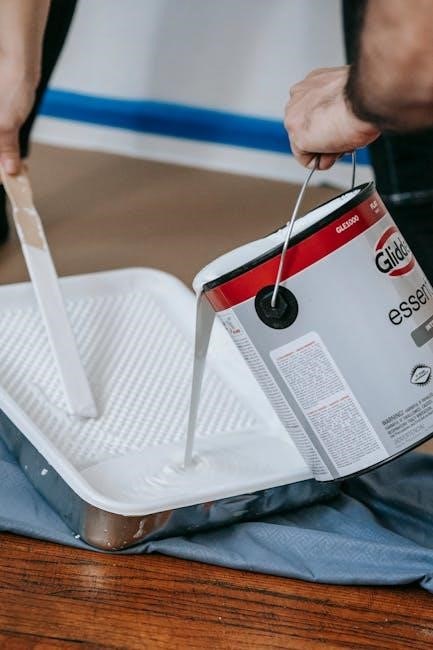where can i enter my ebt card manually
Online Shopping
For online shopping, certain retailers like Walmart and Amazon allow manual entry of your EBT card information. This feature is helpful when the card’s magnetic stripe is damaged or when technical issues arise. Simply select the EBT payment option during checkout and enter your card details manually. Ensure the retailer accepts EBT for online purchases, as not all stores offer this option. This method provides flexibility for those preferring online transactions.

In-Store Purchases
When making in-store purchases, manual entry of your EBT card is possible under certain conditions. If the card’s magnetic stripe is damaged or if the POS terminal is not functioning properly, cashiers can manually input your card details. This process is widely accepted at retailers that accept EBT payments, including grocery stores, supermarkets, and convenience stores. For example, at Dollar General, even though they do not accept EBT for online purchases, they allow manual entry in-store if the card cannot be swiped.
To complete a manual entry, the cashier will typically need your EBT card number, the expiration date, and your PIN. Some POS systems may prompt for additional verification steps to ensure the transaction is secure. For instance, certain systems may require the cashier to confirm your identity by checking your ID or ensuring the names on the card and ID match. This is a standard security measure to prevent unauthorized use of your benefits.
Some retailers, like Walmart, have updated their systems to allow manual entry directly on the POS terminal. If the card cannot be swiped, the cashier can press a specific button (e.g., a red X button) to switch to manual entry mode. Once the details are entered, you will be prompted to enter your PIN on the keypad to complete the transaction. This process is designed to be quick and efficient, ensuring minimal delays at checkout.
It’s important to note that not all in-store systems may support manual entry, so it’s always a good idea to confirm with the cashier or store staff beforehand. Additionally, some stores may require you to have your EBT card physically present, even for manual transactions, as part of their store policies. This ensures compliance with SNAP and EBT regulations and helps protect your benefits from misuse.

Expiration Date Workaround
When manually entering your EBT card information, you may encounter an issue with the expiration date. EBT cards typically do not have an expiration date printed on them, which can cause confusion during manual entry. However, there is a known workaround for this situation. According to recent guidelines, if prompted for an expiration date during manual entry, you should enter 12/49. This specific date is recognized by the system as a placeholder, allowing the transaction to proceed without issues.
This workaround is particularly useful in scenarios where the EBT card does not have an expiration date, or when the system requires a date to complete the transaction. The 12/49 entry effectively bypasses the expiration date validation, ensuring that your benefits can still be applied to the purchase. It is important to note that this method is specifically designed for EBT transactions and should only be used in such cases.
Some retailers and their POS systems may not be aware of this workaround, so it’s advisable to inform the cashier if they encounter difficulties with the expiration date field. By entering 12/49, the transaction can be processed smoothly, preventing any delays or complications at checkout. This solution is widely accepted across various retailers that support manual EBT entry, making it a reliable option for cardholders.
PIN Entry
When manually entering your EBT card information, the PIN entry step is a critical part of the transaction process. The Personal Identification Number (PIN) is required to authenticate the transaction and ensure that the purchase is authorized. This security measure is in place to prevent unauthorized use of your EBT benefits. Whether you are entering your card details online or in-store, the PIN must be provided to complete the transaction.
In most cases, the PIN entry process is straightforward. After manually entering your EBT card number, you will be prompted to enter your four-digit PIN. This can be done either on a keypad at the point of sale or through an online portal, depending on where you are making the purchase. It is important to ensure that you enter the correct PIN, as multiple incorrect attempts may result in your card being temporarily or permanently locked.
If you are unable to swipe your EBT card and need to enter it manually, the cashier will typically ask for your PIN to complete the transaction. In some cases, you may be required to provide additional verification, such as a photo ID, to confirm your identity. This is an extra layer of security to protect your benefits from being misused.
If you forget your PIN, you can contact the customer service number on the back of your EBT card to reset it. You can also change your PIN online through your state’s EBT portal, if available. It is advisable to choose a PIN that is easy for you to remember but difficult for others to guess, to maintain the security of your benefits.

Store-Specific Policies
Store-specific policies play a significant role in determining how and where you can manually enter your EBT card information. Not all retailers have the same procedures, so it’s important to familiarize yourself with the policies of the stores you frequent. For instance, some stores may allow manual entry at the checkout counter, while others may require the physical card to be present or may not accept manual entry at all.
One key aspect to consider is whether the store has an electronic point-of-sale (POS) system that supports manual entry. Many modern retailers have updated their systems to accommodate this feature, especially for customers whose cards may have issues with the magnetic stripe. However, older systems or smaller businesses might not have this capability, making manual entry impossible in those cases.
Another factor is the training of the store staff. Even if the POS system allows manual entry, the cashier may not be aware of the process or may not be authorized to perform it. In such situations, it’s advisable to ask for a manager or someone familiar with the procedure to assist. Some stores have specific protocols for handling manual entries, which may include additional verification steps or documentation requirements.
Store-specific policies can also vary regarding the types of transactions that support manual entry. For example, some retailers might allow manual entry for in-store purchases but not for online transactions. Others may restrict manual entry to certain types of benefits, such as SNAP or cash benefits, but not both. Understanding these distinctions is crucial to avoid any complications during checkout.
Lastly, it’s important to note that store policies can change over time. What may have been allowed in the past might no longer be permitted, or new procedures might have been implemented. Therefore, it’s a good idea to check with the store directly or contact their customer service to confirm their current policies on manual EBT card entry before making a purchase.

Transaction and Security Concerns
When manually entering your EBT card information, it’s important to consider the potential security risks and ensure that the transaction is handled securely. Manual entry can sometimes bypass certain security measures, such as the card’s magnetic stripe or PIN verification, which may leave the transaction more vulnerable to fraud or errors.
One common security concern is the expiration date prompt during manual entry. EBT cards typically do not have an expiration date printed on them, and they do not expire in the traditional sense. However, some systems require an expiration date to process the transaction. In such cases, a workaround is often used, where the date 12/49 is entered to bypass the expiration prompt. This is a known solution and is designed to allow the transaction to proceed without issues.
Another critical aspect is the PIN entry. While manual entry of the card number is possible, the PIN is still required to complete the transaction. This adds an additional layer of security, ensuring that only the authorized cardholder can use the benefits. However, if the PIN is shared or compromised, it could lead to unauthorized transactions. It’s essential to keep your PIN confidential and avoid sharing it with anyone.
Stores and online retailers also have their own security protocols to protect EBT transactions. For example, some systems may flag manually entered transactions for additional verification or monitoring. This is a precautionary measure to detect and prevent fraudulent activity. In some cases, the store may require identification or further verification before processing a manual entry transaction.
It’s also important to be aware of your surroundings when manually entering your EBT card information. Avoid using public computers or unsecured networks, as this could expose your card details to potential hackers. Always ensure that the device or system you’re using is secure and reputable.
If you suspect any unauthorized activity or security breaches related to your EBT card, contact your local benefits office or customer service immediately. They can assist in locking your card and investigating any suspicious transactions. Remember, your benefits are an important resource, and protecting them from fraud is essential.
Benefit Types
Electronic Benefit Transfer (EBT) cards are used to disburse various types of benefits, primarily through the Supplemental Nutrition Assistance Program (SNAP) and cash assistance programs. These benefits can be accessed manually in certain situations, and understanding the types of benefits is crucial for ensuring proper usage.
For SNAP benefits, which are used to purchase food and eligible household items, manual entry of the EBT card number is often allowed in both online and in-store transactions. Retailers like Walmart and Amazon permit manual entry during online checkout, provided they accept EBT for online purchases. In physical stores, if the card’s magnetic stripe is damaged, cashiers can manually input the card details to process the transaction. This ensures that SNAP recipients can access their benefits even when technical issues arise.
Cash assistance benefits, on the other hand, can also be accessed manually under specific conditions. While these benefits are typically used in-store or at ATMs, some retailers allow manual entry of the EBT card number for cash purchases. However, this is less common and depends on the retailer’s policies. Manual entry for cash benefits usually requires additional verification steps, such as PIN entry, to ensure security.
It’s important to note that not all retailers support manual entry for both SNAP and cash benefits. Some stores may only allow manual entry for SNAP purchases, while others may require the physical card to be present for cash transactions. Always check with the retailer beforehand to confirm their policies on manual entry and the types of benefits they accept.
Additionally, manual entry systems are designed to handle the unique requirements of EBT transactions. For instance, when prompted for an expiration date during manual entry, a commonly used workaround is to enter 12/49, as EBT cards do not have traditional expiration dates. This ensures that the transaction can be processed smoothly without delays.
